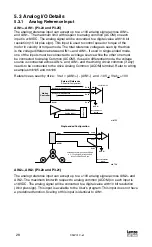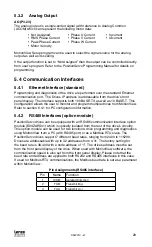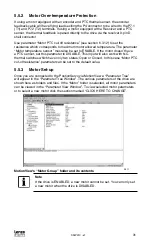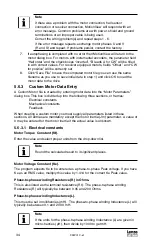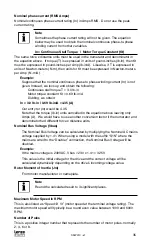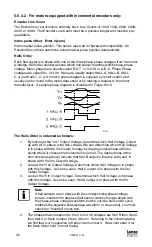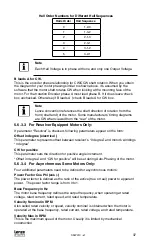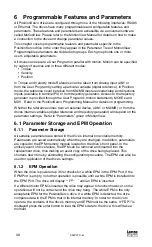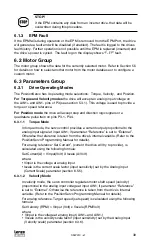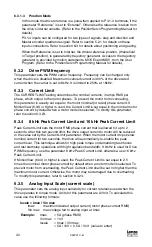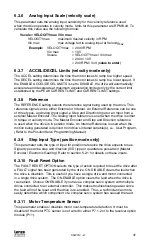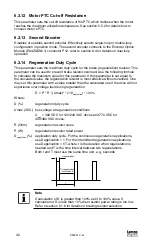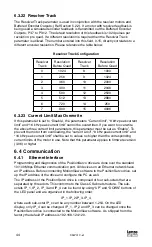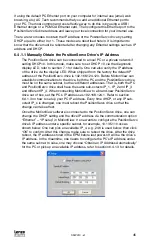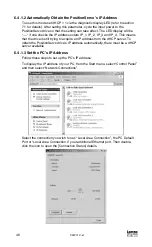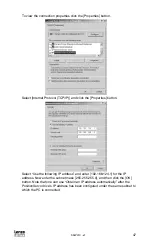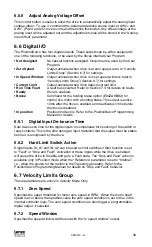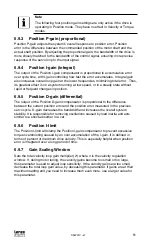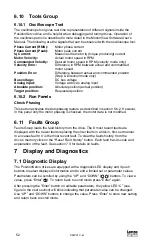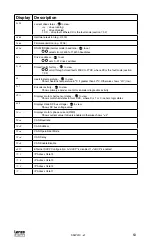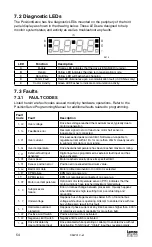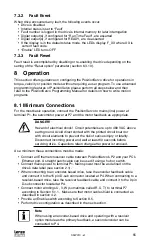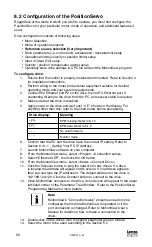
S94P01C -e1
42
6.3.12 Motor PTC Cut-off Resistance
This parameter sets the cut-off resistance of the PTC which defines when the motor
reaches the maximum allowable temperature. See section 5.5.2 for details how to
connect motor’s PTC.
6.3.13 Second Encoder
Disables or enables second encoder. Effectively selects single-loop or double-loop
configuration in position mode. The second encoder connects to the Encoder Option
Module (E94ZAENC1) connector P12, refer to section 8.4 for details on dual loop
operation.
6.3.14 Regeneration Duty Cycle
This parameter sets the maximum duty cycle for the brake (regeneration) resistor. This
parameter can be used to prevent brake resistor overload. Use the following formula
to calculate the maximum value for this parameter. If this parameter is set equal to
the calculated value, the regeneration resistor is most effective without overload. One
may set this parameter with a value smaller than the calculated one if the drive will not
experience over voltage fault during regeneration.
D = P * R / (Umax)
2
* (1/D
application
) * 100%
Where:
D (%)
regeneration duty cycle
Umax (VDC) bus voltage at regeneration conditions
U
max
= 390 VDC for 120/240 VAC drives and 770 VDC for
400/480 VAC drives.
R (Ohm)
regeneration resistor value
P (W)
regeneration resistor rated power
D
application
(%) application duty cycle. For the continuous regeneration applications,
use Dapplication = 1. For the intermittent regeneration applications,
use Dapplication = t/T, where t is the duration when regeneration is
needed and T is the time interval between two regenerations.
Both t and T must use the same time unit, e.g., seconds
t, regeneration
T-t, regeneration
is not needed
T
Note
If calculation of D is greater than 100% set it to 100% value. If
calculation of D is less than 10% then resistor power rating is too low.
Refer to section 5.1.6 for details on braking resistor selection.

